Rajsamand: city in Rajasthan, India
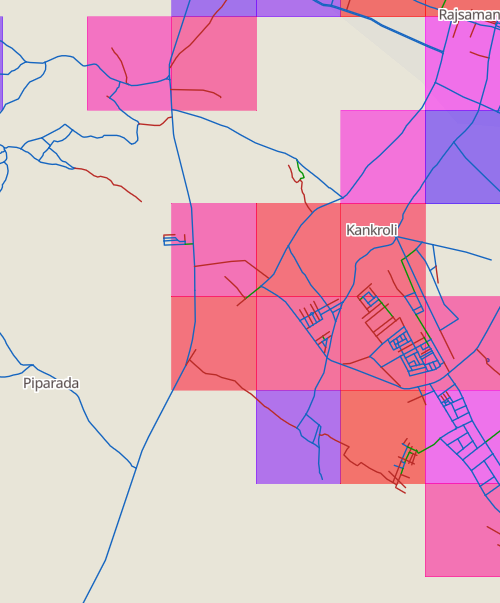
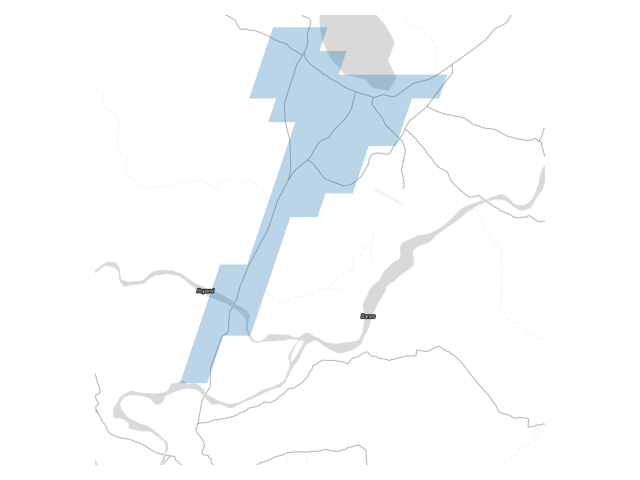
What exactly constitutes the spatial extent of the city? For these aggregations, we used the Global Human Settlement Layer Urban Center Database (GHS-UCDB) to define the boundaries of the city. These cities -- or urban centers -- cover areas that are densely populated and built-up, and so may extend beyond the spatial borders of these cities that we may be familiar with. The GHS area is shaded in blue.
View Rajsamand, India on the sprawlmap
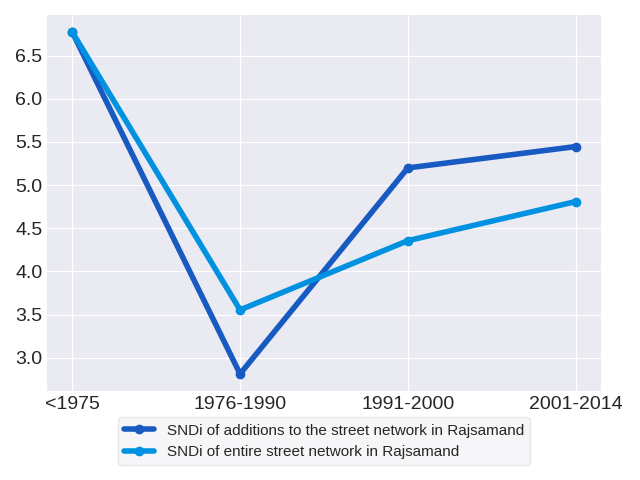
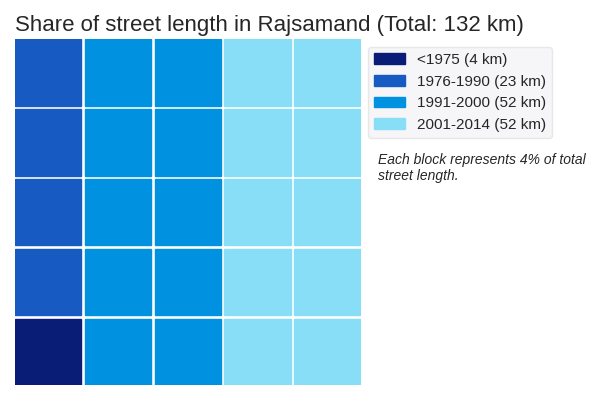
Most recent snapshot: Taking into account the entire (i.e. aggregate) street network in Rajsamand as of 2014, the overall level of street-network sprawl is 4.81, which is highly disconnected.
Trends in street network construction: The SNDis of street construction for the respective time periods are 6.77, 2.81, 5.2 and 5.45. The disconnectivity of new streets constructed in Rajsamand fell, then rose. In 1976-1990, new street layouts were the most connected.
Quantity of street network construction: The street network in Rajsamand spans a total of 132 kilometers. The period with the greatest volume of street construction was 2001-2014. These roads have an SNDi of 5.45, which is highly disconnected.
Effect on the aggregate network: New construction in each period adds to the total stock of streets, but does not change streets that have already been built. Therefore, it has a limited effect on the street network as a whole. The SNDis of the aggregate street network in the respective time periods are 6.77, 3.55, 4.36 and 4.81. The SNDi of the aggregate street network in fell at first, but Rajsamand has worsened in disconnectivity since 1990.
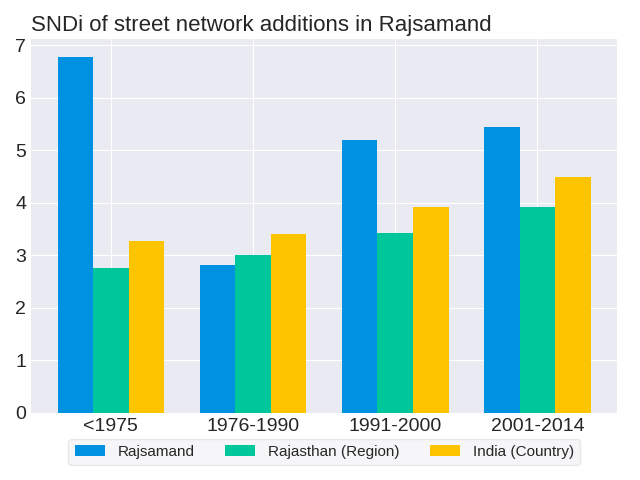
Rajsamand and Rajasthan do not follow the same trend in the disconnectivity of their street network constructions. The SNDi in Rajsamand was at its lowest in 1976-1990, while the SNDi of street constructions in Rajasthan rose steadily.
How do development practices in Rajsamand fare in comparison to others in Rajasthan? Most recently in 2001-2014, street construction in Rajsamand was the 2nd-most disconnected out of the 135 cities in Rajasthan. Its position in the ranks since 1975 has risen; relative to other cities in Rajasthan, street construction in Rajsamand has become more disconnected. Rajsamand ranked 3rd in 1975, 28th in 1976-1990, 3rd in 1991-2000 and 2nd in 2001-2014.
Rajsamand and India do not follow the same trend in the disconnectivity of their street network constructions. The SNDi in Rajsamand was at its lowest in 1976-1990, while the SNDi of street constructions in India rose steadily.
How do development practices in Rajsamand fare in comparison to others in India? Most recently in 2001-2014, street construction in Rajsamand was the 180th-most disconnected out of the 1716 cities in India. Its position in the ranks since 1975 has fallen; relative to other cities in India, street construction in Rajsamand has become more connected. Rajsamand ranked 23rd in 1975, 495th in 1976-1990, 164th in 1991-2000 and 180th in 2001-2014.
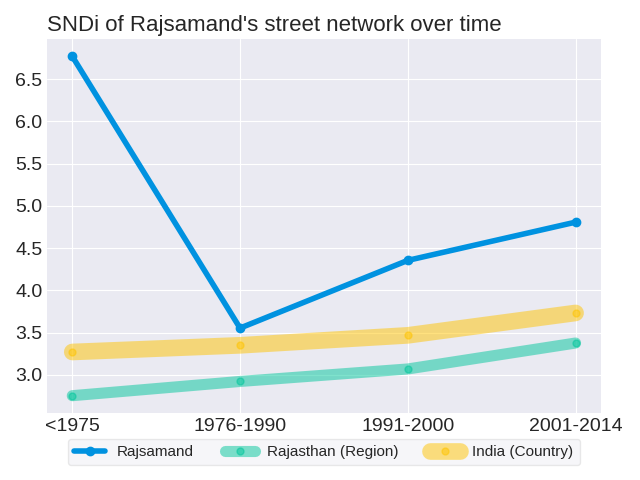
Rajsamand and Rajasthan do not follow the same trend in the disconnectivity of their aggregate street networks. The SNDi in Rajsamand was at its lowest in 1976-1990, while the SNDi of street constructions in Rajasthan rose steadily.
To date, Rajsamand is the 3rd-most disconnected out of the 135 cities in Rajasthan. Its position in the ranks since 1975 has not changed. Rajsamand ranked 3rd in 1975, 16th in 1976-1990, 6th in 1991-2000 and 3rd in 2001-2014.
Rajsamand and India do not follow the same trend in the disconnectivity of their aggregate street networks. The SNDi in Rajsamand was at its lowest in 1976-1990, while the SNDi of street constructions in India rose steadily.
To date, Rajsamand is the 147th-most disconnected out of the 1716 cities in India. Its position in the ranks since 1975 has fallen; relative to other cities in India, the street network in Rajsamand has become more connected. Rajsamand ranked 23rd in 1975, 303rd in 1976-1990, 187th in 1991-2000 and 147th in 2001-2014.
As of 2015, Rajsamand had a built-up area of 5.33 square kilometers, and a population of 170466 people.
These are some other cities with approximately the same population: